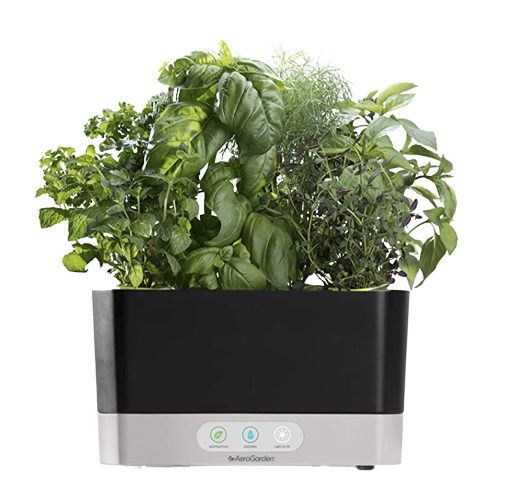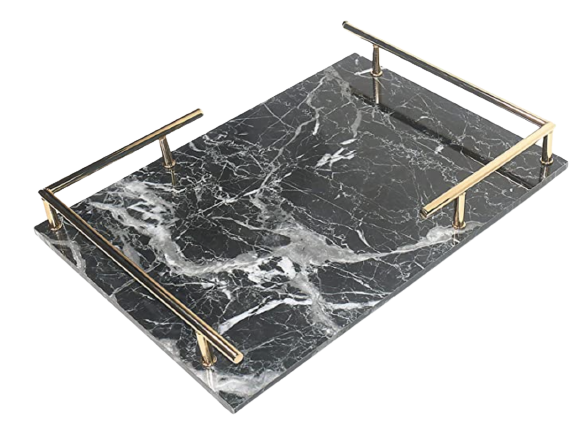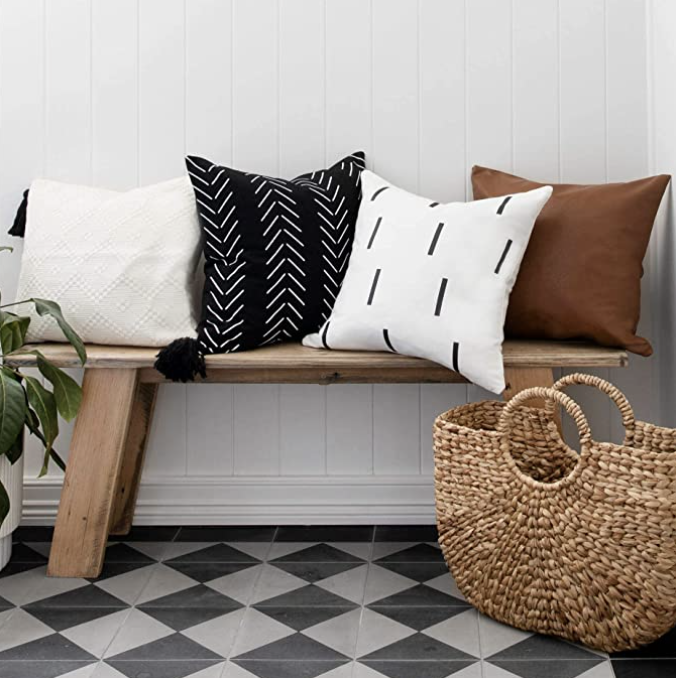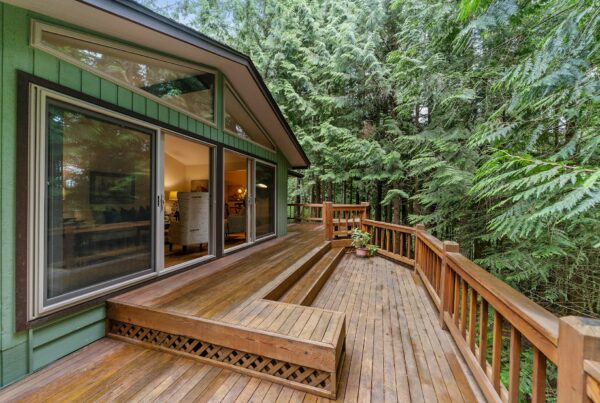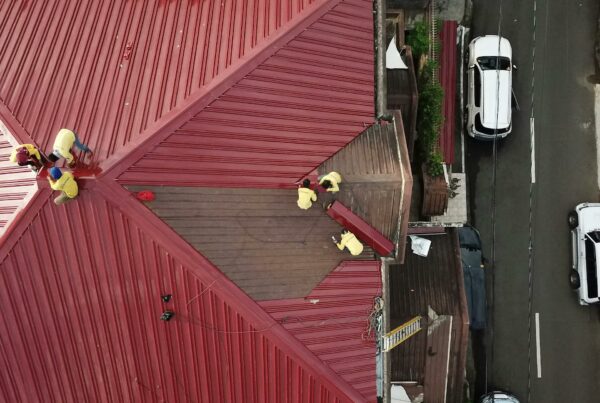Last Updated on March 21, 2024
The future of outdoor spaces promises a blend of innovation, personalization, and sustainability, marking a significant shift in how we interact with our external environments. As we explore the upcoming trends for 2024, it’s clear that these areas are no longer just backdrops to our homes but integral parts of our daily lives, shaped by our desires for flexibility, connectivity, and ecological responsibility. The integration of advanced technologies and the push for green living spaces are paving the way for a future where our outdoor environments are aesthetically pleasing, environmentally conscious, and technologically equipped. With these changes, we’re witnessing a redefinition of what it means to be outdoors, where the natural and the artificial merge in harmony. Here’s a detailed look at what’s ahead, structured around key themes highlighting this evolution.
Embracing Sustainability in Design
Sustainability stands at the forefront of outdoor space design, reflecting a collective awareness of environmental impact. Adopting eco-friendly materials for patios and decks signifies this trend, as does integrating technologies to reduce water and energy use. Innovations like solar-powered lighting and rainwater harvesting systems exemplify how functionality and sustainability are becoming synonymous in modern outdoor spaces. Additionally, using native plants and landscaping techniques that require minimal water and maintenance supports the ecosystem while reducing the carbon footprint. Permeable paving solutions also contribute to this trend, allowing rainwater to recharge groundwater and minimize runoff, further emphasizing the sustainable ethos in outdoor design. Moreover, the growing popularity of outdoor kitchens and dining areas uses sustainable materials and energy-efficient appliances, underlining a commitment to eco-conscious living even in leisure and entertainment spaces.
The Rise of Personalization
The shift towards personalization profoundly changes outdoor living spaces, making them reflections of individual preferences and lifestyles. In this evolving landscape, the role of a custom deck builder is crucial. They provide specialized services beyond mere construction; they consult with homeowners to create designs that are visually appealing and deeply personal, blending seamlessly with the owner’s lifestyle and the home’s overall aesthetic. This trend marks a departure from one-size-fits-all solutions to those that celebrate the unique character of each homeowner, creating spaces that are not just outdoors but extensions of the personal living environment. This approach is seen in deck construction and other aspects of outdoor design, such as bespoke garden features, personalized water fountains, and sculptures that tell a personal story. Custom lighting and the integration of intelligent technology for convenience, like app-controlled ambient lighting, further highlight the trend towards outdoor spaces that are crafted to match the individual’s way of life, making the role of the custom deck builder integral in bringing personal outdoor visions to life.
Flexibility and Multifunctionality
The notion of the backyard as a singularly proposed space is fading, giving way to a more versatile conception. This year, expect to see outdoor areas that can effortlessly transition from serene retreats to workspaces to entertainment zones. Demand is rising for furniture and design elements that offer durability and ease of movement, allowing for quick adaptation to various needs and seasons. The introduction of weatherproof Wi-Fi extenders and solar chargers facilitates the backyard’s transformation into a functional outdoor office. Garden rooms and pergolas with adjustable roofs and walls are becoming popular for providing shelter and privacy for relaxation and social gatherings. Furthermore, the trend toward outdoor cinemas, complete with weather-resistant screens and projectors, underscores the backyard’s evolution into a versatile space for family entertainment and leisure.
Technological Integration
Technology’s influence on outdoor spaces is growing, with thoughtful landscaping leading the charge. The ability to control irrigation, lighting, and even music through smartphone apps enhances convenience and resource conservation. This technological integration allows for an outdoor experience customized at the touch of a button, marrying convenience with environmental mindfulness. Voice-activated devices are expanding this convenience, enabling homeowners to adjust settings without lifting a finger, from changing the color of LED lights to starting a water feature. Developing autonomous garden robots capable of lawn mowing and plant care further reduces the effort required to maintain a pristine outdoor space. Moreover, advancements in weather prediction technologies integrated into innovative outdoor systems can optimize irrigation schedules and lighting based on real-time weather conditions, ensuring efficient resource use and a responsive outdoor environment.
Blurring Indoor and Outdoor Boundaries
The distinction between indoor and outdoor living spaces is increasingly blurred, thanks to design elements like large, sliding glass doors and continuous flooring. This seamless transition not only enhances the spatial perception of homes but also reinforces the significance of nature in our daily lives, promoting a living environment that values the outdoors as much as the indoors. Biophilic design principles are being widely adopted, incorporating natural materials, green walls, and water features inside homes to mirror the outdoor environment, fostering a deeper connection with nature. Retractable roofs and walls offer the flexibility to modify living spaces based on weather conditions or personal preference, further blurring the lines between indoor and outdoor living. Additionally, the use of outdoor fabrics and materials inside the home for furniture and decor, known for their durability and resistance to sun fading, integrates outdoor elements indoors, creating a cohesive aesthetic that celebrates the natural world.
Gardening with a Twist
Gardening is being reimagined, moving beyond traditional practices to embrace vertical gardens and edible landscapes. These innovative approaches make efficient use of space and add visual and functional value to outdoor areas, offering fresh produce and a connection to nature right in one’s backyard. Hydroponic systems are gaining popularity for growing plants without soil, reducing the need for water and space while eliminating soil-borne pests. Companion planting, an age-old rediscovered practice, involves strategically placing plants together to deter pests and enhance growth, naturally fostering a healthy and productive garden. Additionally, using innovative gardening technology, such as sensor-based irrigation systems and app-controlled garden monitoring, supports these innovative gardening methods by ensuring optimal growing conditions, further revolutionizing how we cultivate our connection to the earth.
Conclusion
It’s evident that the future of outdoor spaces is about much more than aesthetic updates or conventional landscaping. It’s about creating environments that resonate with our evolving lifestyles, preferences, and values. From sustainability and flexibility to personalization and technological integration, these trends offer a glimpse into how outdoor spaces will continue to adapt, providing new ways to connect with and enjoy the natural world. The convergence of design and technology enhances the functionality of these spaces and ensures they are more inclusive and accessible to all, regardless of age or ability. Moreover, as we fully embrace outdoor living, the lines between public and private spaces are beginning to blur, inviting communities to come together in shared green spaces. Will this shift lead to a more communal and connected society deeply rooted in the principles of sustainability and cooperation.



